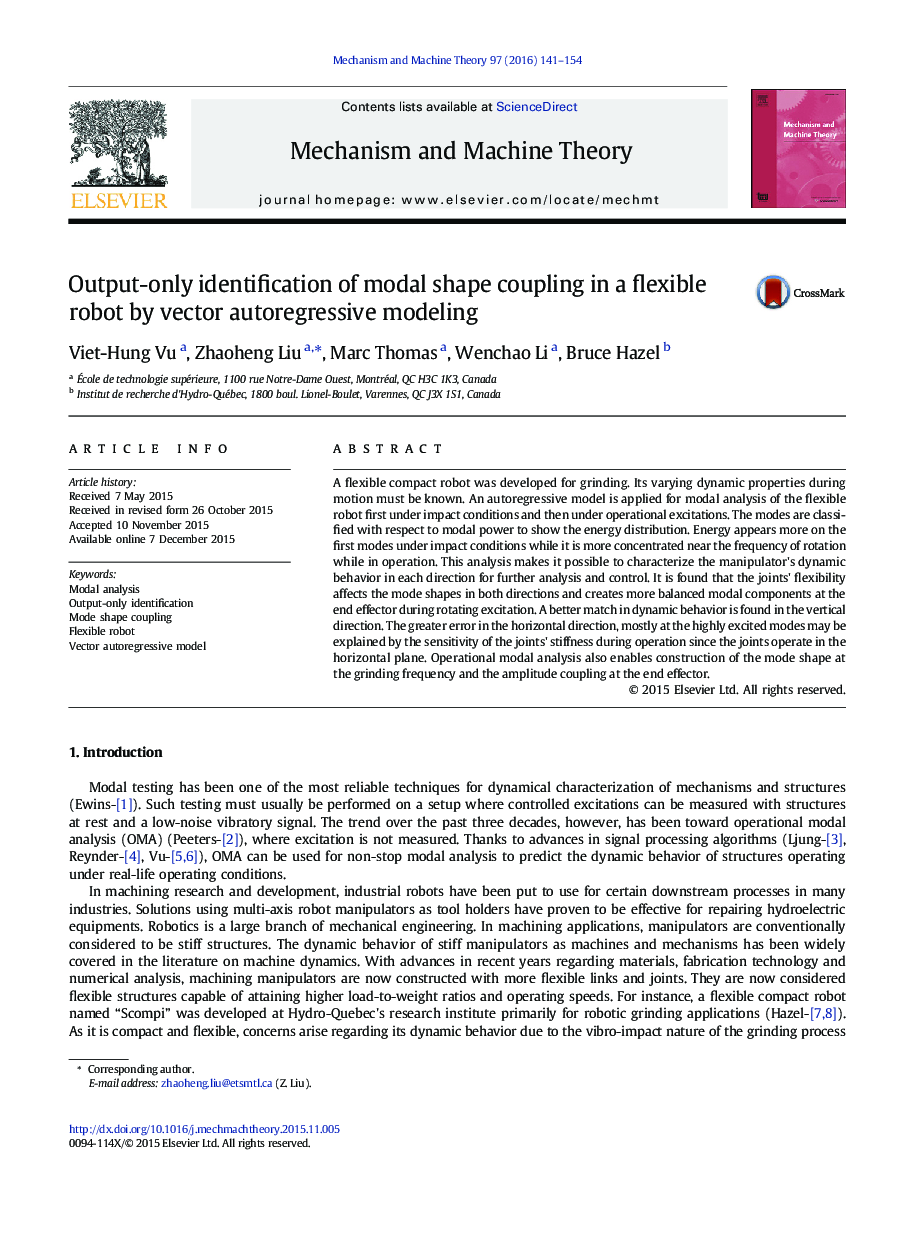| Article ID | Journal | Published Year | Pages | File Type |
|---|---|---|---|---|
| 802079 | Mechanism and Machine Theory | 2016 | 14 Pages |
•Output-only modal analysis of a flexible robot is conducted by means of a vector autoregressive model.•The spatial modes of the structure are decoupled into unidirectional analyses.•The flexibility of joints affects significantly the mode shapes and ODS in both directions under rotating excitation.•The first structural mode is not the most excited mode under rotating excitation.
A flexible compact robot was developed for grinding. Its varying dynamic properties during motion must be known. An autoregressive model is applied for modal analysis of the flexible robot first under impact conditions and then under operational excitations. The modes are classified with respect to modal power to show the energy distribution. Energy appears more on the first modes under impact conditions while it is more concentrated near the frequency of rotation while in operation. This analysis makes it possible to characterize the manipulator's dynamic behavior in each direction for further analysis and control. It is found that the joints' flexibility affects the mode shapes in both directions and creates more balanced modal components at the end effector during rotating excitation. A better match in dynamic behavior is found in the vertical direction. The greater error in the horizontal direction, mostly at the highly excited modes may be explained by the sensitivity of the joints' stiffness during operation since the joints operate in the horizontal plane. Operational modal analysis also enables construction of the mode shape at the grinding frequency and the amplitude coupling at the end effector.
